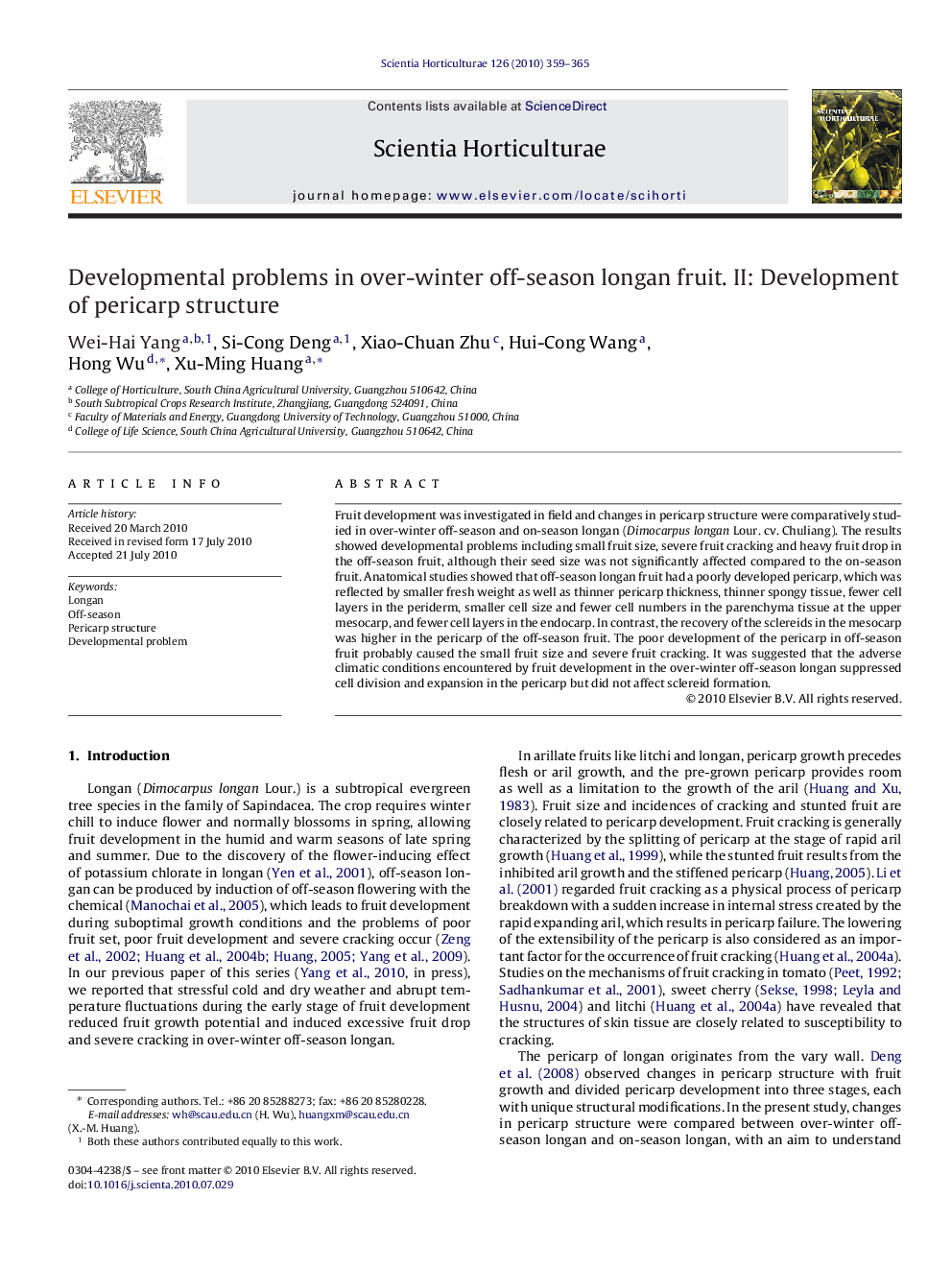| Article ID | Journal | Published Year | Pages | File Type |
|---|---|---|---|---|
| 4568334 | Scientia Horticulturae | 2010 | 7 Pages |
Fruit development was investigated in field and changes in pericarp structure were comparatively studied in over-winter off-season and on-season longan (Dimocarpus longan Lour. cv. Chuliang). The results showed developmental problems including small fruit size, severe fruit cracking and heavy fruit drop in the off-season fruit, although their seed size was not significantly affected compared to the on-season fruit. Anatomical studies showed that off-season longan fruit had a poorly developed pericarp, which was reflected by smaller fresh weight as well as thinner pericarp thickness, thinner spongy tissue, fewer cell layers in the periderm, smaller cell size and fewer cell numbers in the parenchyma tissue at the upper mesocarp, and fewer cell layers in the endocarp. In contrast, the recovery of the sclereids in the mesocarp was higher in the pericarp of the off-season fruit. The poor development of the pericarp in off-season fruit probably caused the small fruit size and severe fruit cracking. It was suggested that the adverse climatic conditions encountered by fruit development in the over-winter off-season longan suppressed cell division and expansion in the pericarp but did not affect sclereid formation.
Research highlights▶ Over-winter off-season longan had a poorly developed pericarp which is related to small fruit size and severe cracking. ▶ The adverse climatic conditions encountered by off-season longan suppressed cell division and expansion but affect not sclereid formation in the pericarp.
